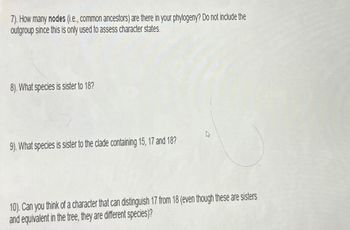4). Reconstruct the phylogeny that most simply and accurately accounts for the distribution of synapomorphies among ingroup species. Given matrices as small and simple as the above example, one can "build" the tree from the bottom up in a series of sketches, adding clades or branches representing groups with the fewest synapomorphies near the base of the tree and those with the most at the tips. Using the unlabeled phylogeny as a starting point, draw the stepwise construction of a fully resolved phylogeny to account for all of the synapomorphies, and include the synapomorphies that identify each clade (the first one, character 2, is included to get you started; this is shared by all members of the ingroup). 25 OG Fruit Character 2 (leaf edge): 0-1 5). Map the one autapomorphic character onto the branch leading to the single species that has a derived character state. These types of characters provide no grouping information. 5). Circle all of the clades (i.e., a common ancestor and all of its descendants) in the tree.
Evolution
The history and science of origin and evolution comprise two events, the beginning of life and expansion of life. Our earth originated about 4.5 billion years ago. The term evolution is derived from two Latin words and means the act of unfolding or unrolling. English philosopher Herbert Spencer first used it. Evolution is defined as the change in heritable traits of biological populations over successive generations. These traits are the manifestations of genes that are passed down from parent to offspring during reproduction.
Cladistics
Cladistics is a technique in the classification of organisms, where they are grouped into different clades. The proof for the relationships that are hypothesized is based on the shared derived characteristics known as synapomorphies. These characteristics do not exist in many of the distant ancestors and groups. The common ancestor along with its descendants is considered to be a part of the clade. The rate of closeness is directly proportional to the cladistic grouping and is useful in analyzing the evolutionary mechanism.
Outgroups
Outgroups are significant in studying cladistics or phylogenetics (that describe the evolutionary relationship between different organisms). Further, it is also important to understand the differences and similarities between different organisms.
Taxonomy
It is the branch of biology that works with the identification of organisms at first, then naming, and classification of them into phenetic or phylogenetic groups (a classification system). In other words, it is the scientific study of biological diversity and a part of systematic biology.
Phylogenetics
Phylogenetics is the scientific study of how various groups of organisms are related at the evolutionary level. It finds the relationship between various organisms based on their evolutionary similarities and differences. It is a part of the taxonomy. Although the taxonomic study is not only concerned about phylogeny but taxonomic studies are also concerned about the classification and nomenclature of the different individuals from different taxon.
Look at the diagram in the second picture and answer the questions in the first picture, answer all 3 questions and don't copy anyone else's work, it's a practice assignment so I need to know the answers so I can make sure I pass
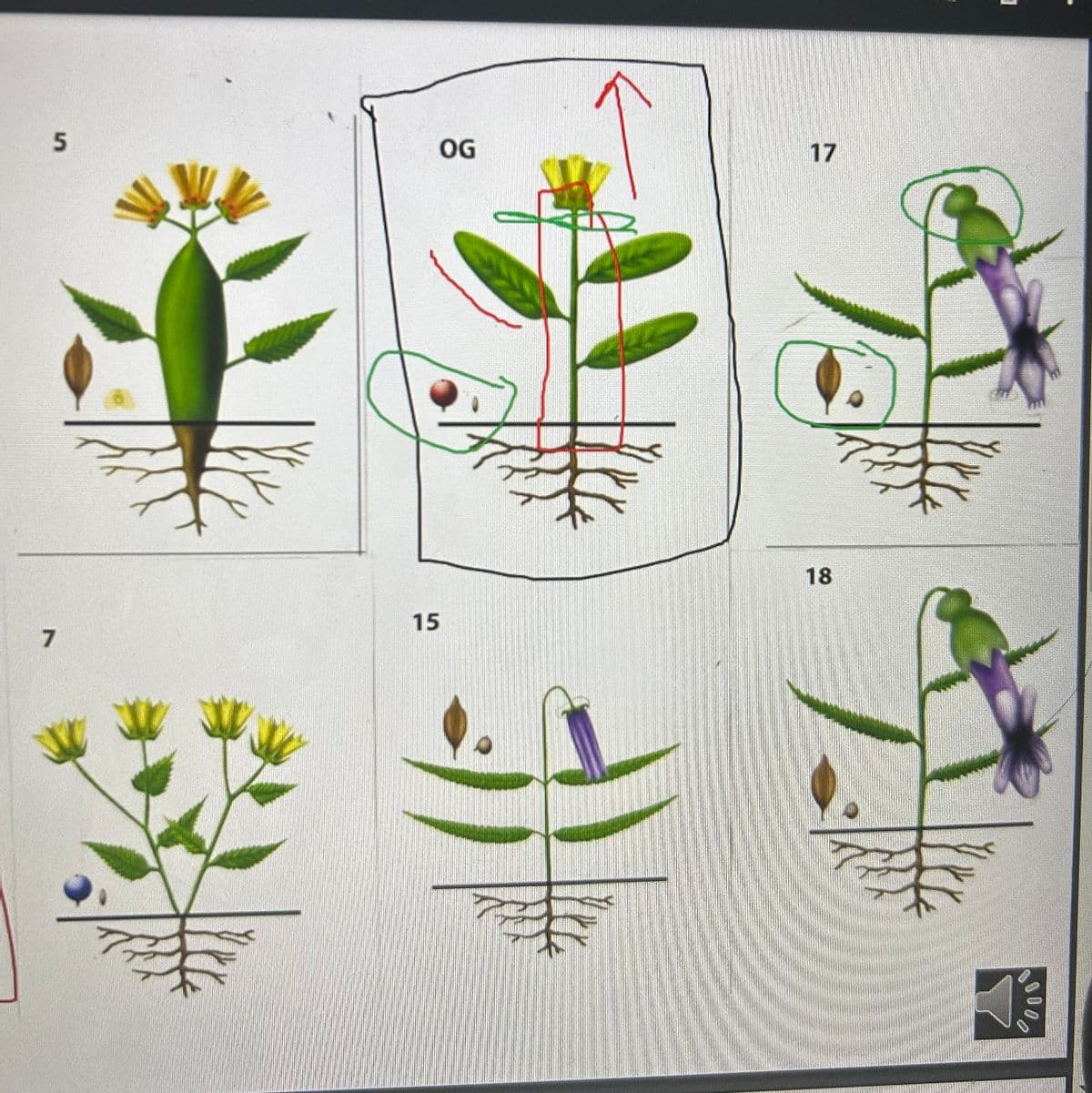
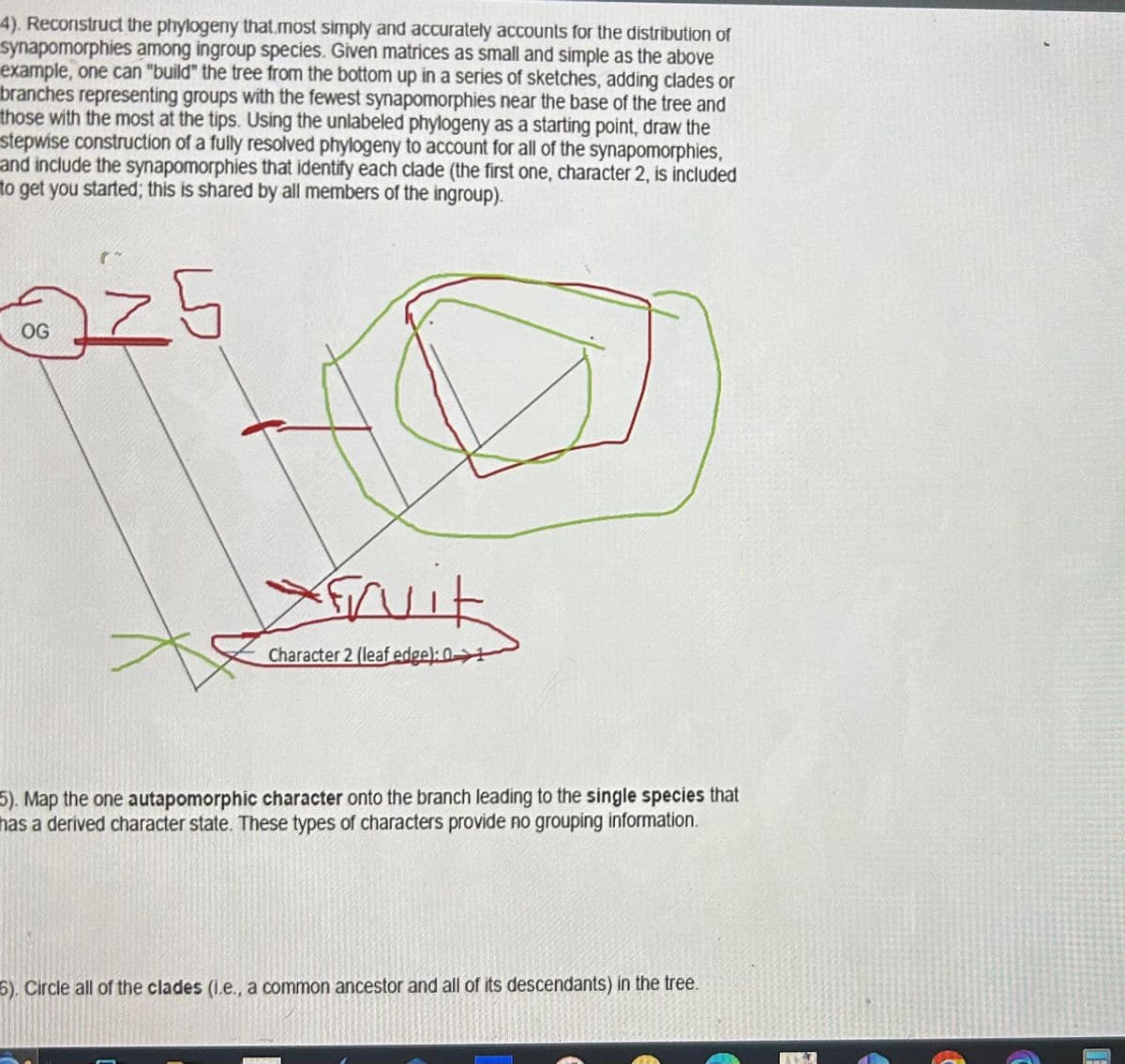
Trending now
This is a popular solution!
Step by step
Solved in 7 steps with 4 images

Answer questions 7 and 10 and don't copy off the other persons work, question 7 says to not include the outgroups, look
How many nodes (i.e., common ancestors are there in your phylogeny? Do not include the outgroup since this is only used to assess character states.
don't include the outgroup and than answer that and than answer question 10 normally because question 10 hasn't been answered DONT copy someone else's work
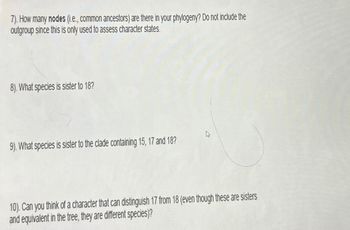
Answer only question 7 and 10 based on the diagrams and solutions above and the tree
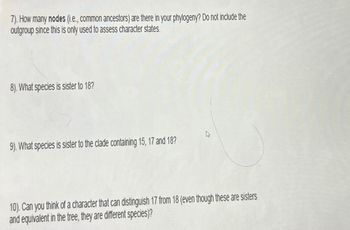
look at the above solution and answer the question in the second picture that I'm currently uploading!
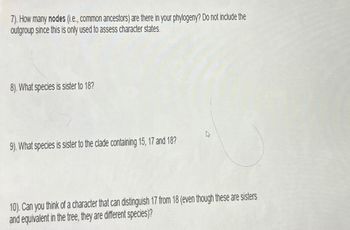
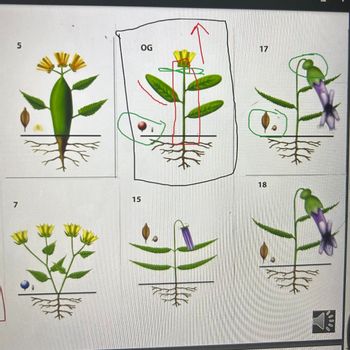
look at the above solution and answer the question in the second picture that I'm currently uploading!
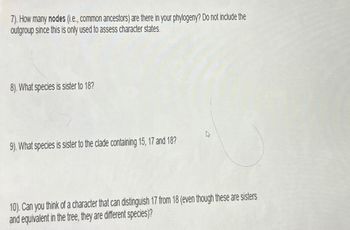

Please also answer these! Your answers were amazing! The flower diagram goes with this, this practice worksheet has 3 parts and I'm submitting the third part questions 6 through 10, thanks!
